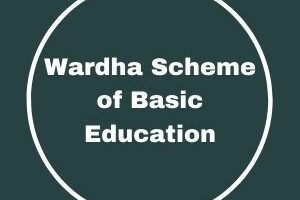Wahabi Movement:
Wahabism was at first a religious reform movement of Islam and attacked the un-Islamic practices, which had crept into Muslim society. Soon, however, it also acquired a political tenor. Saiyid Ahmad Raebarelwi of Raebareli in eastern U.P. (1786-1831) was the founder of this movement, which was named after Abdul Wahab of Nazd (1703-87), the founder of the Wahabi sect. Saiyid Ahmad’s ambition was to revive and restore the Muslim power in India by overthrowing the Sikhs in the Punjab and the British from India. They took up arms against both. The activities of the Wahabis covered the period from 1820-70.
Saiyid Ahmad “Raebarelwi”, a man of humble origin, trained his followers in the use of arms and held military parades. The views of the sect spread very rapidly in Kabul, the North West Frontier Provinces, Bengal, Bihar, and Central Provinces, etc. Saiyid Ahmad captured Peshawar for a short while (1830) and struck coins in his own name, but in the ensuing year (1831) he was killed in the Battle of Balkot.
After Saiyid Ahmad’s abrupt death in 1831, Patna became the centre of the movement. The movement was then led by Maulvi Qasim, Vilayat Ali, Inayat Ali, and Ahmadullah, who waged numerous battles against the British, particularly in the North West Frontier Province. The Wahabi movement was better planned, organized, and unified than the uprising of 1857. The absolute secrecy with which its activities were carried out and the loyalty of its members to one another were remarkable.
Saiyid Ahmad had appointed four khalifas or spiritual vice-regents. The khalifas toured the length and breadth of the country stirring up the people against the English infidels. Though the movement suffered from certain weaknesses, such as communal passions, fanaticism, and divisions within its ranks, the Wahabis did not come into conflict with the Hindus.
The movement assumed the character of a class struggle in some places, especially in Bengal, where it was accompanied by furious uprisings of the peasants against their landlords, irrespective of religious distinctions. The struggle, however, was not so much for securing freedom for India, as for the revival of Muslim sovereignty.
The British government struck at the root of the movement by taking vigorous measures against the rebels in different pockets. The army was used against the Wahabis and several of its leaders and followers were sentenced to death, as a result of which the movement waned around 1870.









Comments (No)